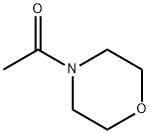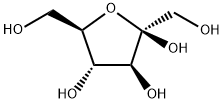
Acrylamide synthesis
- Product Name:Acrylamide
- CAS Number:79-06-1
- Molecular formula:C3H5NO
- Molecular Weight:71.08
Nitto Chemical (now Dia-Nitrix) introduced a biosynthetic route from ACRN to acrylamide in Japan in 1985. This process uses an immobilized nitrile hydratase biocatalyst that converts the ACRN solution to acrylamide with a yield of 99.5%. This high yield allows a concentrated acrylamide solution to be made without the need for ACRN recycle or solution concentration. This process therefore has lower energy costs.

107-13-1
410 suppliers
$17.00/25ML

79-06-1
609 suppliers
$17.00/25g
Yield:79-06-1 100%
Reaction Conditions:
with water;copper chromite, reduced, supported in stainless steel wire socks at 64 - 96; under 637.564 Torr;Heating / reflux;
Steps:
1 EXAMPLE 1
Pellets of a copper-chromite catalyst in its reduced form (650g), supported in stainless steel wire socks (22 in number), were packed in a 5 m section of a catalytic distillation column 12 having dimensions of 10m height x 25mm diameter. The top one meter of the column (zone 16) and the bottom 4 meters (zone 18) were filled with Raschig rings. Demineralized water was introduced into the reboiler 24 to 30% of its capacity. Under a nitrogen atmosphere, the water was boiled up into the column under atmospheric pressure (85kPa) until a reflux was reached (96°C). Acrylonitrile containing 35ppm methylated hydroquinone (MeHQ) was introduced at a feed point(flow line 22) just below the catalyst bed at a rate of 30g/hour and water fed (flow line 20) above the catalyst zone at a rate of 84g/hour. After the introduction of acrylonitrile, the temperature inside the catalyst bed dropped to the boiling point of the acrylonitrile-water azeotrope (64°C). The product solution containing 35% by weight acrylamide (100% conversion and 100% selectivity) was removed from the reboiler along the flow line 34, at a rate of 114g/hour.
References:
EP1124789,2004,B1 Location in patent:Page 3

107-02-8
4 suppliers
$38.60/4s8501

79-06-1
609 suppliers
$17.00/25g

814-68-6
384 suppliers
$21.21/5gm:

79-06-1
609 suppliers
$17.00/25g

4441-33-2
4 suppliers
inquiry

108-24-7
5 suppliers
$14.00/250ML

1696-20-4
243 suppliers
$6.00/10g

79-06-1
609 suppliers
$17.00/25g

57-48-7
559 suppliers
$12.00/250G

3130-87-8
229 suppliers
$7.00/10g

79-06-1
609 suppliers
$17.00/25g